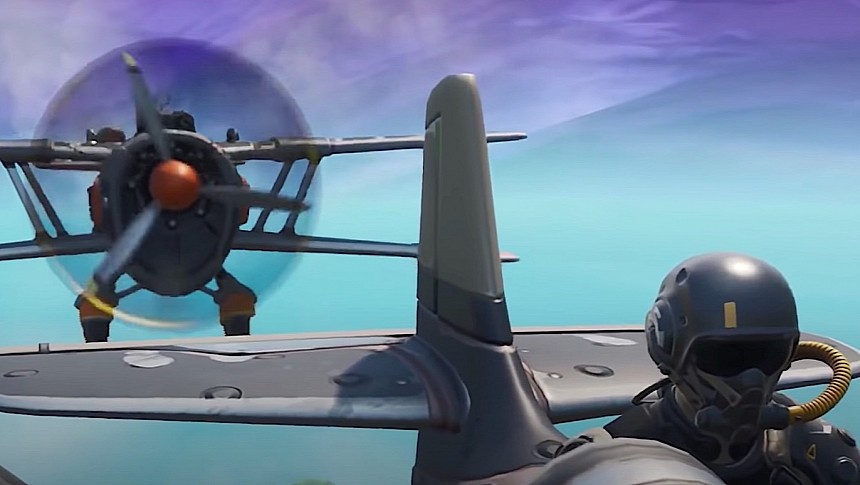They say a video game is only as good as the environment is as close visually as possible to the real world. And for gamers, it doesn't really get any better than what Epic Games' Unreal Engine is capable of doing.
The name is an umbrella term for a series of 3D computer graphics systems in use since 1998. It premiered then on a first-person shooter video game called exactly that, Unreal, and it has stayed with us ever since.
The engine is currently at version 5.3, and it's a tool so advanced it not only powers today's most popular games (Fortnite, Lyra, The Matrix Awakens, Mortal Online 2, Cepheus Protocol, and many others), but it has also entered the world of car design.
And, as of now, you can bet on the graphics tool to help with the training of pilots, no matter if they like to fly fighter jets, transport aircraft, rotary wing machines, or even passenger airliners.
That's because the Unreal Engine is now at the core of a new image generator called Arcus. The system was announced this week by defense contractor Collins Aerospace as the perfect rendering and processing tool for simulators and other gear meant to support pilot training.
You all know how simulators are essential in getting people ready for flying the actual aircraft, and you probably all know these simulators, just like video games, are only as good as the images of the surroundings they can generate.
In the Arcus the Unreal Engine was made to work in conjunction with Collins' existing rendering tools, and what resulted is described as "high-fidelity visual realism." Sadly, we get no sense of exactly what that means, as no video of the Arcus in action was released.
We do know the system is of the open systems architecture variety, and what that means is it can work with full-size flight simulators and flight training devices, but it can be adapted to work with headset virtual reality (VR) and mixed reality (MR) systems as well.
Was there a need for such a system, when most of the airplanes currently in operation already come with their own simulators? Collins seems to think so, and blames it all on the shortage of pilots the US Air Force (USAF) is currently experiencing.
As per Britt Hurst, Collins Director of Business Development for Simulation and Training Solutions, the USAF is short at least 2,000 pilots, and it is struggling to fill that gap by training as many people as once as possible. And then you also have to consider the needs for pilots of the other two branches who use them, the US Navy and the Space Force.
As per the executive, "asymmetrical training should accelerate military pilot production to help resolve the current pilot shortage."
The engine is currently at version 5.3, and it's a tool so advanced it not only powers today's most popular games (Fortnite, Lyra, The Matrix Awakens, Mortal Online 2, Cepheus Protocol, and many others), but it has also entered the world of car design.
And, as of now, you can bet on the graphics tool to help with the training of pilots, no matter if they like to fly fighter jets, transport aircraft, rotary wing machines, or even passenger airliners.
That's because the Unreal Engine is now at the core of a new image generator called Arcus. The system was announced this week by defense contractor Collins Aerospace as the perfect rendering and processing tool for simulators and other gear meant to support pilot training.
You all know how simulators are essential in getting people ready for flying the actual aircraft, and you probably all know these simulators, just like video games, are only as good as the images of the surroundings they can generate.
In the Arcus the Unreal Engine was made to work in conjunction with Collins' existing rendering tools, and what resulted is described as "high-fidelity visual realism." Sadly, we get no sense of exactly what that means, as no video of the Arcus in action was released.
We do know the system is of the open systems architecture variety, and what that means is it can work with full-size flight simulators and flight training devices, but it can be adapted to work with headset virtual reality (VR) and mixed reality (MR) systems as well.
Was there a need for such a system, when most of the airplanes currently in operation already come with their own simulators? Collins seems to think so, and blames it all on the shortage of pilots the US Air Force (USAF) is currently experiencing.
As per Britt Hurst, Collins Director of Business Development for Simulation and Training Solutions, the USAF is short at least 2,000 pilots, and it is struggling to fill that gap by training as many people as once as possible. And then you also have to consider the needs for pilots of the other two branches who use them, the US Navy and the Space Force.
As per the executive, "asymmetrical training should accelerate military pilot production to help resolve the current pilot shortage."






